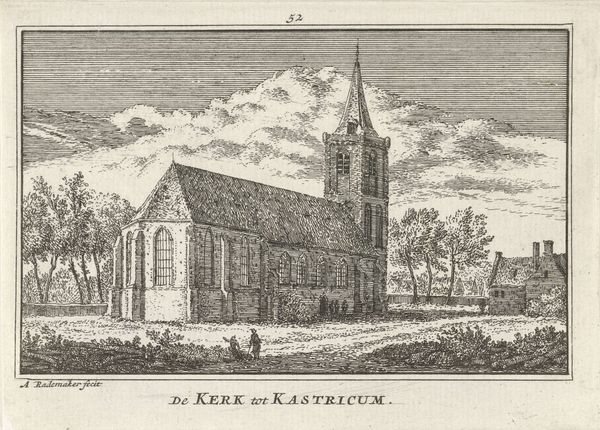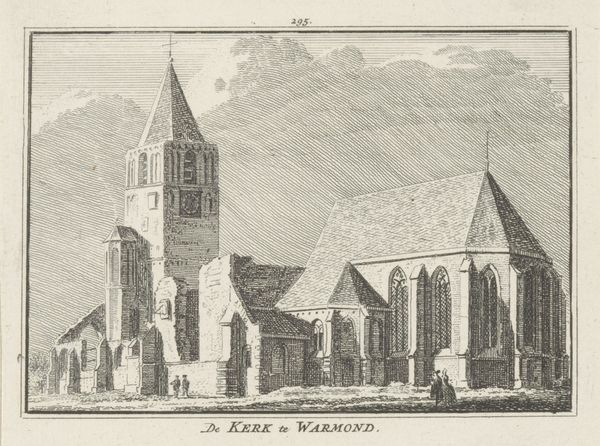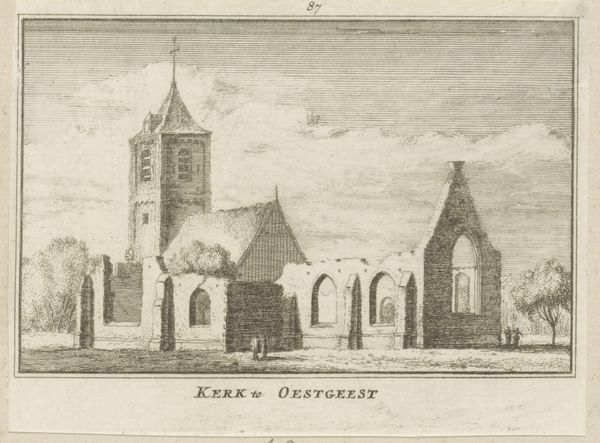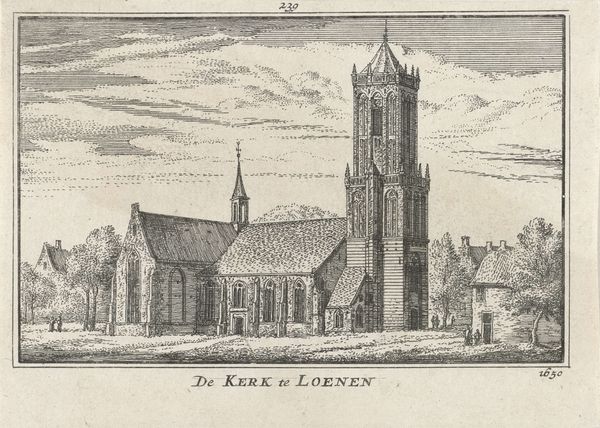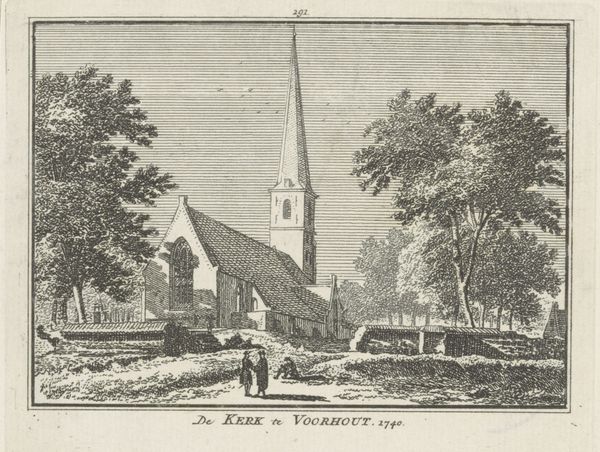
drawing, print, ink, engraving
#
drawing
#
dutch-golden-age
# print
#
old engraving style
#
landscape
#
ink
#
line
#
cityscape
#
engraving
#
realism
Dimensions: height 80 mm, width 115 mm
Copyright: Rijks Museum: Open Domain
Editor: Here we have Abraham Rademaker's "Gezicht op de kerk te Warmond, 1650," a print created sometime between 1727 and 1733. The detail is amazing. What strikes me most is the line work used to create such texture. How do you see the artistry in this piece? Curator: What captivates me here is the sophisticated interplay of line and tone, especially considering this is an engraving. Notice how the artist uses varying densities of hatching to evoke a sense of volume and light. What structural elements stand out? Editor: I see how the verticality of the church tower contrasts with the horizontal landscape. The eye is drawn upwards, but the composition keeps it grounded. Curator: Precisely. The composition achieves a satisfying balance, further enhanced by the strategic placement of the clouds. Consider how the linearity almost borders on abstraction; Rademaker isn't merely representing reality but is actively constructing a visual experience. Are you also intrigued by the contrast of textures, rough versus smooth? Editor: Definitely. The rough, broken textures in the walls really makes the steeple seem clean. How do you see that playing into Dutch realism? Curator: Realism isn't solely about mimetic representation; it's also about engaging with the material qualities of the world. Look at how the texture isn't applied everywhere, though. Note how smooth it is, for example, along the bottom bank that it reflects in the canal. How do those features guide your eye? Editor: I had missed that! So it uses the line work to divide it between a sense of realness and art. Curator: Exactly. It asks, "what are the rules and limits of art," which for me is the great draw of formal analysis: technique can be art itself. Editor: It's a fascinating lens! Thanks for pointing out things I completely overlooked.
Comments
No comments
Be the first to comment and join the conversation on the ultimate creative platform.


